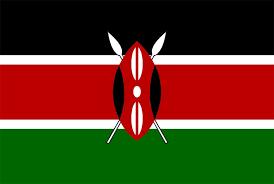Meaning of Colors of Kenyan Flag
What is the Meaning of the Kenyan Flag?
The flag of Kenya is a powerful symbol that embodies the nation's history, culture, and aspirations. With its vibrant colors and striking design, it serves as a visual representation of Kenya's journey to independence and its commitment to unity, peace, and prosperity.
Historical Background
The Kenyan flag's origins can be traced back to the period of decolonization in the early 1960s. After years of British colonial rule, Kenya was on the cusp of independence, and there was a growing desire for a national symbol that would reflect the country's newfound freedom and identity. In response to this need, a nationwide competition was held to design a new flag for the emerging nation.
Designing the Flag
The winning design was created by a young Kenyan student named Bethwell Allan Ogot. His design was chosen from over 1,000 entries and was officially adopted as the national flag of Kenya on December 12, 1963, just before the country gained independence
Each color on the Kenyan flag holds deep significance
Black
The black stripe on the Kenyan flag represents the Kenyan people. It serves as a reminder of the struggles and hardships endured by the citizens of Kenya throughout history, particularly during the colonial era under British rule. The color black symbolizes the strength, resilience, and solidarity of the Kenyan people in their quest for independence and self-determination.
During the colonial period, Kenya experienced widespread oppression, exploitation, and discrimination under British colonial rule. The black stripe on the flag pays homage to the countless individuals who fought bravely for freedom and justice, often at great personal risk. It represents the resilience of the Kenyan people in the face of adversity and their unwavering commitment to achieving sovereignty and equality.
Additionally, the black color signifies the rich cultural heritage and diversity of Kenya's population. It serves as a unifying symbol that transcends ethnic, religious, and linguistic differences, emphasizing the shared identity and common destiny of all Kenyan citizens.
Red
The red stripe on the Kenyan flag symbolizes the bloodshed and sacrifices made by Kenyan patriots and freedom fighters in their struggle for independence. It represents the courage, valor, and determination of those who fought against colonial oppression and injustice, often risking their lives for the cause of freedom.
Throughout Kenya's history, numerous individuals and communities bravely resisted colonial rule through acts of defiance, protest, and armed struggle. The red color serves as a tribute to their bravery and selflessness, acknowledging the sacrifices they made to secure a better future for generations to come.
Moreover, red embodies the spirit of resilience and resistance against oppression, inspiring Kenyans to uphold the values of freedom, democracy, and human rights. It serves as a reminder of the ongoing struggle for social justice and equality, urging citizens to remain vigilant in defending their hard-won liberties.
Green
The green stripe on the Kenyan flag represents the country's fertile land, natural resources, and agricultural wealth. It symbolizes the beauty, abundance, and diversity of Kenya's landscapes, from the lush forests and savannahs to the fertile farmlands and coastal plains.
Kenya's agricultural sector has long been the backbone of its economy, providing livelihoods for millions of people and contributing significantly to the nation's development and prosperity. The green color reflects Kenya's agrarian heritage and its commitment to sustainable development, environmental conservation, and food security.
Furthermore, green signifies growth, renewal, and vitality, underscoring Kenya's aspirations for economic progress, social advancement, and environmental sustainability. It serves as a reminder of the importance of preserving and protecting the natural environment for future generations, ensuring a harmonious balance between human activities and the ecosystems on which life depends.
White
The white stripes on the Kenyan flag symbolize peace, unity, and harmony among the country's diverse communities. They represent the ideals of tolerance, inclusivity, and coexistence, fostering a sense of national cohesion and solidarity.
Kenya is home to a mosaic of ethnic, cultural, and religious groups, each with its unique traditions, languages, and customs. The white color signifies the shared values and aspirations that bind these communities together, transcending differences and promoting mutual respect, understanding, and cooperation.
Additionally, white embodies purity, innocence, and hope, symbolizing Kenya's commitment to building a society based on justice, equality, and human dignity. It serves as a beacon of light in times of darkness, inspiring Kenyans to strive for a future free from conflict, discrimination, and division.
Contemporary Relevance
As Kenya continues to progress and evolve as a modern nation, the flag remains a potent symbol of national pride and identity. It serves as a unifying force, bringing together people from different backgrounds and ethnicities under a common banner. In times of celebration, crisis, or national significance, the flag is proudly displayed as a symbol of unity, resilience, and hope for the future.
Conclusion
In conclusion, the Kenyan flag is more than just a piece of cloth; it is a living symbol of the nation's history, values, and aspirations. Through its colors and design, it tells the story of Kenya's journey to independence, its rich cultural heritage, and its commitment to peace, unity, and progress. As Kenya continues to chart its course in the 21st century, the flag will remain a constant reminder of the country's past achievements and a beacon of hope for a brighter future.
